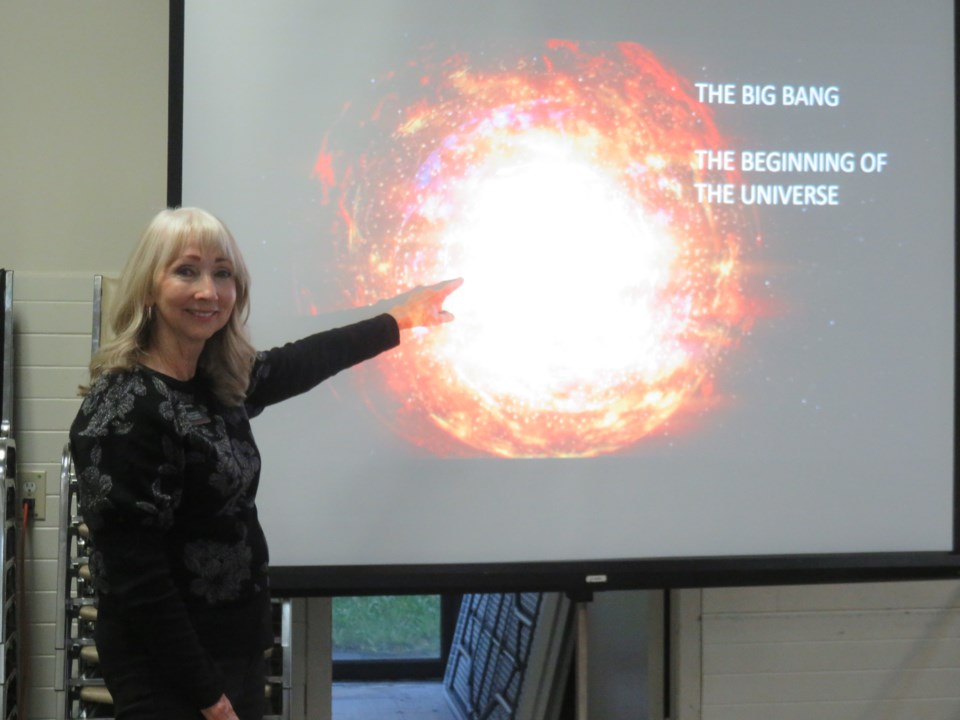Astronomy professor Lori Prause describes Squamish as a picture postcard.
However, it wasn’t just the mountains and trails that attracted Prause, who has a bachelor of science degree from Arizona State University’s School of Earth and Space Exploration and a master’s degree from Swinburne University of Science and Technology.
While on sabbatical from her teaching post at Paradise Valley Community College in Phoenix, A.Z., she said she has a mission to present the miracle of the skies wherever she goes.
“When I learn something, I like to share it,” she said.
Prause discovered astronomy later in life.
“After having six children, I knew I needed something to sharpen my brain,” she said.
After attending a talk on astronomy, she came home bubbling with excitement and the desire to reach for the stars.
At her recent presentation at the Squamish Library, Prause traced the history of the telescope from the 1608 patent by Netherland eyeglass maker Hans Lippershey, to Galileo Galilei—who improved the design and sketched the stars—to Johannes Kepler, who replaced the concave lens to a convex one to create a higher level of magnification. She traced it further through history from Isaac Newton, who proposed the use of reflecting mirrors, to the Hubble Space Telescope launch in 1990, which sent captivating images of Earth’s constellations, and finally to the present James Webb Space Telescope (JWST) that is using hexagonal mirrors and infrared light to capture awesome images of outer space.
A short video was shown of how the JWST was miraculously unfurled in outer space from its folded origami-like form into the observatory and universal telescope it is today.
The JWST is the National Aeronautics and Space Administration’s (NASA) infrared flagship observatory, an international collaboration between NASA, the European Space Agency and the Canadian Space Agency.
Presently, due to its 300 clear nights per year, a mega-sized, multi-mirrored telescope is being built in Chile.
Among the stars in the Squamish night skies this month, Prause pointed out that Jupiter and its four moons are visible, as well as Saturn’s rings and the Andromeda nebula.
Participants at her recent talk were also given the telescopic thrill of gazing at a luminous Squamish moon.
These are exciting times in astronomy. We have just entered the spring equinox, which brings balance between night and sunnier days.
And, on April 8, the Earth will experience a celestial celebration as the moon slowly passes between the Earth and the sun in a solar eclipse, momentarily plunging earthen skies from shadowy darkness to brilliant light.
Titled “Looking for Life in the Universe,” Prause’s next series of talks to be held at Brennan Park Recreation Centre on Fridays from April 5 to May 3, 2024, will surely expand your universe. (It’s free, but attendants should register online through squamish.ca/rec.)
So, is there life on other planets?
“With 300 billion and counting galaxies in the universe, I think that’s a definite possibility,” Prause said.




